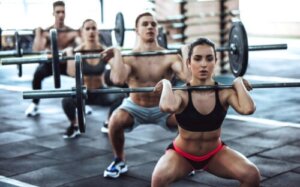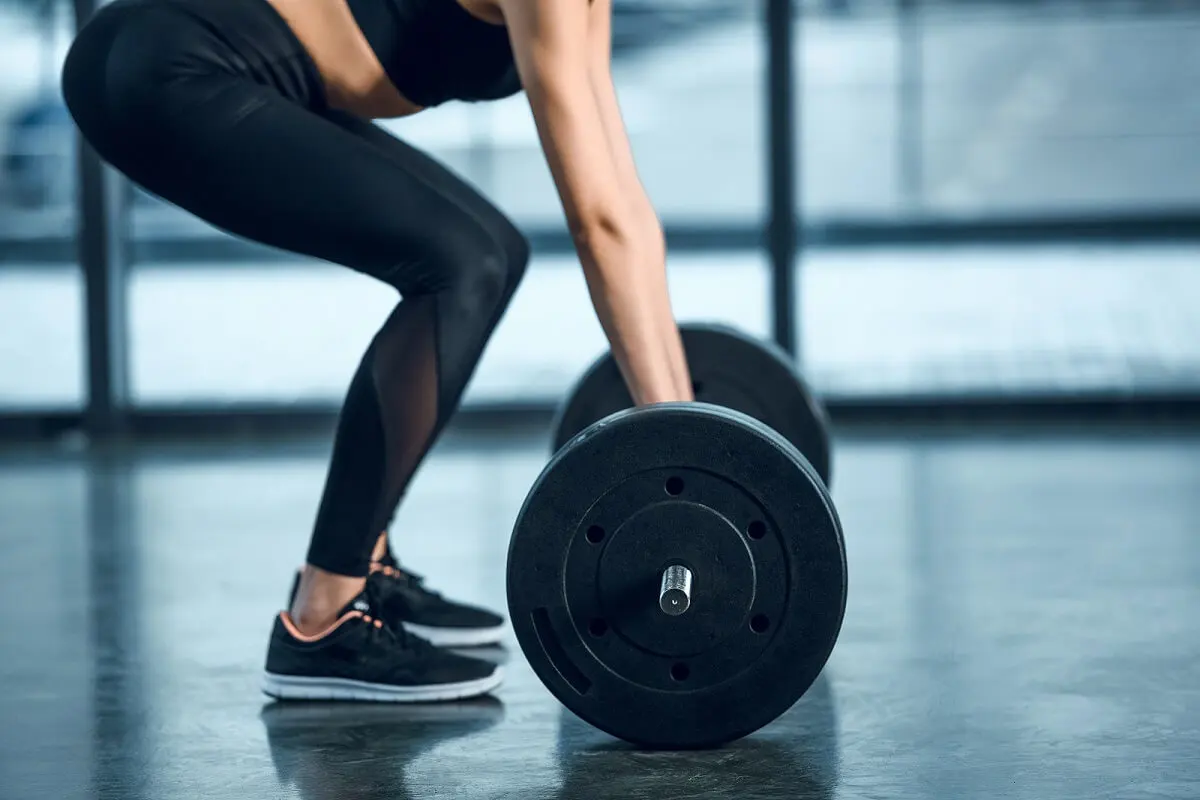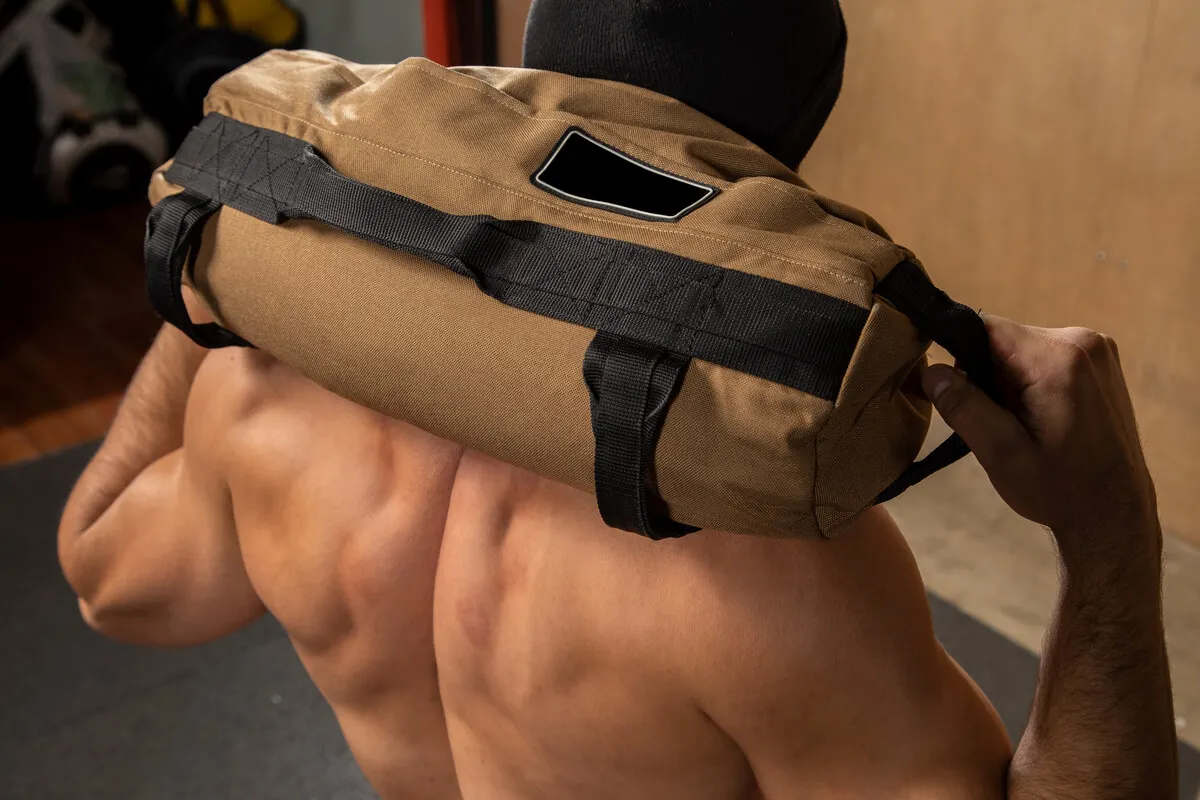The Deadlift: What It Is, How to Do It, and Its Benefits

The deadlift is a weightlifting exercise widely used in high-performance gym routines. It’s also a natural movement in weightlifting, the Olympic sport known as powerlifting. The key is that you can identify what the deadlift consists of and how you can do it to develop a perfect technique.
It’s an exercise that mobilizes different joints in its execution. It’s considered a very complete exercise since it involves a large set of muscle groups and helps you to develop all of them.
The essential thing is to understand that the strength comes from the legs because they cause the thrust that allows you to lift the bar to the desired height and fulfill the lift. Below, you’ll find all the elements you need to keep in mind to perform this exercise and to know the benefits of its practice.
What does the deadlift consist of and what muscles does it work?
The deadlift is one of the most characteristic exercises of the CrossFit. A deadlift is defined as a system of strength and physical performance training for the development of the body’s capabilities. Therefore, it consists of a multi-joint lifting – that is to say, a lift that involves several body sections at the same time.
The muscles that it works the most are the following:
- The shoulders (deltoids)
- The front of the thighs (quadriceps)
- The front of the hips (hip flexors)
- The back of the thighs (hamstrings)
You also exercise, although to a lesser degree, the calves and lumbar muscles, which correspond to the back of the calf and the side of your spine, respectively.

How to do a deadlift
Start performing the movement with the minimum weight possible so you can assimilate the routine and then take care to increase the load you lift. A good recommendation would be to start the practice with a dumbbell or Bulgarian bags.
It’s important that you have the help of a qualified professional for learning and accurate execution, at least to begin with. To improve your performance, here are the 5 steps to the deadlift technique.
We think you may also enjoy reading this article: What is Better When You Exercise: More Weight or More Repetitions?
1. Starting position
Place your legs shoulder-width apart. Your feet should be placed forming a kind of V between them – that is, with an external rotation.
Then, stand in front of the squat bar without lifting the soles of your feet. Hold the bar with the palms of your hand facing downwards. Your arms should be straight and wider than shoulder-width apart.
Your back should be straight and firm, projecting your chest forward, with your head in a neutral posture and aligned to your spine.
2. Lifting the bar from the floor
In this step, without bending at the waist, you should lift the barbell that is on the floor. Use the strength of your hips and legs.
Avoid lifting your hips before your shoulders. Continue with your head in a neutral position and your elbows extended.
3. The deadlift
Here, pay special attention to the technique to ensure you’re doing it correctly and to prevent injury. As soon as the bar passes your knees, you should push forward with your hips while slowly bending your knees to prevent them from locking.
At this stage, your thighs should be in contact with the bar. However, don’t forget to keep your back straight and stable, with your elbows extended. To finish, you need to quickly extend your hips and knees until you are on your tiptoes.
4. A half squat
Keep the bar as close to your body as possible. Continue with your head in a neutral posture with your elbows pointing out to the sides and back straight.
When extending the joints of the lower muscles, you have to shrug your shoulders up. Do this quickly, without flexing your shoulders yet, so that the trapezius muscles (which are the muscles that surround the upper part of your spine) do the work.
When the shoulders reach their highest point, flex your elbows. Finally, perform two movements simultaneously: flex your hips and knees in a squat while bringing the bar over your body.
Like this article? You may also like to read: Isotonic and Isometric Exercises: The Differences and Benefits
5. Shoulder placement
With your arms under the bar at collarbone height, rise from the squat to place your legs and back fully extended. Remember that concentration is essential to avoid any injury at this high level of the routine.
6. Controlled lowering
Later, the goal is for you to lower the bar in a controlled manner while performing a reverse shoulder rotation. You have to gradually reduce the muscle tension in the arms to grant a controlled lowering through your thighs.

The benefits of the deadlift
The deadlift will boost your strength gains, as you can reinforce other routines, such as long jumps. It’s also a great way to develop your shoulder and collarbone muscles.
This type of strength training has many advantages, such as promoting new cell growth. In addition, you will improve your ability to move quickly, balance, jump and twist with ease, because the strength of your hips, glutes, and abdominals increases considerably.
Recommendations when performing deadlifts
Keep in mind that perfecting your grip on the bar is paramount for you to start this movement in the best way. This way, you can prevent many accidents or injuries later on.
Keep in mind that when picking up heavy things, you can’t be careless to the point of opening your hands in the lift. Concentration is vital for better performance.
Finally, take care of the correct separation of your feet, which should be at the same width as your back. Make sure your body weight rests on your heels and your hands are positioned away from your knees.
Stay focused when performing the deadlift. This will become the secret to your success.
All cited sources were thoroughly reviewed by our team to ensure their quality, reliability, currency, and validity. The bibliography of this article was considered reliable and of academic or scientific accuracy.
- Núñez, C. A. M., Crichton, J. P. Z., Monsalves-Álvarez, M., Arancibia, J. O., & Sepúlveda, R. Y. (2022). Efectos del entrenamiento con movimientos de halterofilia en el rendimiento de esprint, salto y cambio de dirección en deportistas: Una revisión sistemática. Retos: nuevas tendencias en educación física, deporte y recreación, (44), 464-476.
- Nespereira A. 1000 ejercicios de preparación física. Tercera edición. Barcelona: Editorial Paidotribo; 2019.
- Everett G. Halterofilia: guia completa para deportistas y entrenadores. Primera edición. España: Editorial Paidotribo;2021.
This text is provided for informational purposes only and does not replace consultation with a professional. If in doubt, consult your specialist.








